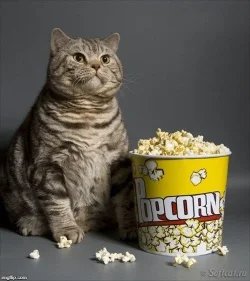Keep in mind the "article" is just an opinion piece, no facts no data, no real context, no looking at the overall picture. All those things matter. But overall I'm in agreement with it, with some guard rails put in place.
I do agree a spare magazine makes sense for a semi auto pistol as dropping the magazine, racking the slide and loading a new magazine is the fastest, and sometimes only way to clear some types of malfunctions if tap, rack, bang fails.
While I always try to send at least 200 rounds down range with a new carry gun or carry load before carrying it, and expend my carry ammo on regular range trips to keep it fresh and ensure continued reliability in the gun, stuff can still happen.
Similarly, with a revolver, I carry a reload more often than not, just because.
Every administrative reload should also be done as a tactical reload (pistol or revolver) so that the movements are well practiced, well ingrained in muscle memory and as close to automatic as possible under extreme stress.
Let's emphasize however that if you realistically see yourself getting in a situation where you are going to need more than a single spare magazine, particularly a high capacity magazine, for anything other than clearing a jam, you need to take a serious look at your larger life choices and why you are going places that pose that level of risk.
Let's also not go around with the justification "that's what the police carry". When I stopped being a LEO and became an armed citizen, I also stopped going into bad places and dangerous situations looking for bad guys. As an armed citizen I use good situational awareness to avoid situations that might realistically require more than a hand full of shots. Even as an LEO I would not walk into those types of places armed with just a handgun.
In short, let's maybe hold off on arming ourselves for an apocalypse / mall ninja scenario with three high capacity magazines, etc, on a day to day basis and insisting it's necessary or prudent.
If you choose to do that, that's just fine. Just be honest with yourself about the downsides. It's heavy, its uncomfortable, and it's not going to be nearly as concealed as you think it is.
----
More importantly, rather than carrying an excessive load out, focus on learning to shoot accurately, at speed, and under stress.
The old saw is "smooth is slow and slow is fast" and while it's a bit of a well worn line and cliche, it's still accurate.
I see folks focusing on speed without mastering the basics of grip, sight alignment and trigger control. They'll invariably site statistics like 80 percent of officers don't even recall using their sights in an officer involved shooting. I don't doubt that's true.
However, let's not forget it reflects the reality that most officers are not gun people, do not shoot outside of what is required to qualify. Let's also keep in mind qualification courses have never been great at reflecting real world shoots, and over the last few decades have gotten worse in terms of accuracy requirements.
My recommendation and what I teach people who want to learn to shoot well in a tactical situation is to start with the basics, then add in speed, then add in movement.
1) Look at the target, and slowly bring the gun up from the holster or from the low ready position.
2) As the handgun rises into your line of sight, place the front sight on target;
***if you can't see the front sight at all, or it's not anywhere close to the rear sight, you need a set of grips or another handgun that fits you better before you even bother shooting.
3) With the front sight blade on target (precisely on the spot you want to bleed), pause and align the rear sights, and then hold that alignment while you smoothly press the trigger.
4) Rinse and repeat (still slowly) a few hundred rounds until you find the rear sights are consistently already aligned with the front blade as it comes up into your line of sight. At this point you have developed an effective grip and the muscle memory needed to repeat it without thinking about it that naturally aligns the sights for you. At this point you are focused on the front sight on target and the 'pause' is just a very brief tiny fraction of a second to confirm alignment and front blade position.
5) At this point you start progressively increasing the speed, while still focusing on keeping the rounds tightly grouped. This can include controlled pairs and Tueller drills
6) However you also want to expend about 10 percent of your rounds slow fire at progressively more distant targets at 25, 50 and then 100 yards to maintain the focus on accuracy, as well as learn how effective a handgun can still be at those ranges, particularly a duty sized handgun.
7) once you're down around 1.0-1.3 seconds from the holster to first shot on target, start integrating movement towards cover, getting off the X, etc.
8) If there is a club in your area that hosts practical pistol matches, start attending. Don't bring a race gun, rather just bring what you carry for self defense. The focus should not be on winning, but rather on improving. The courses of fire and in particular the rules about what targets to engage first and what order to engage targets when multiple hits per target are required can vary from unrealistic to downright stupid, but it does add mental pressure, on top of the pressure that comes from time stress and other people watching you shoot. Over the years I have watched several police officers and federal agents significantly improve their skills using their duty gun, without ever being in the upper half of the field. Winning isn't the point, learning to shoot well under pressure is.
----
I continue to be amazed by people who keep asking what range they should zero their self defense handgun at. They don't seem to realize the trajectory of the average self defense handgun is effectively flat out to 50 yards.
Take for example, a typical 9mm 124 gr bullet with a BC around .120 launched at a fairly sedate 1050 fps from a handgun with a .5 inch sight height. If it shoots point of aim at 12 yards, it will also be shooting point of aim at around 25-26 yards. At 5 to 7 yards it will be .2" low. At 50 yards it will be 1.6 low.
Past that you'll start to see some drop with 6" at 70 yards and 12" at 100 yards. Shooting at a bottle target or B-27 target at 70 yards? Just send it. 100 yards? just hold at the top of the neck.
Using a red dot with a 1" sight height? No big deal. You'll be .5" low close in, be .5" flatter at 50 yards and about an inch flatter at 100 yards.
A bigger issue is using a load and or adjusting the sights to get the point of aim fairly close at 25 yards. Everything else at any reasonable self defense range will then take care of itself.



